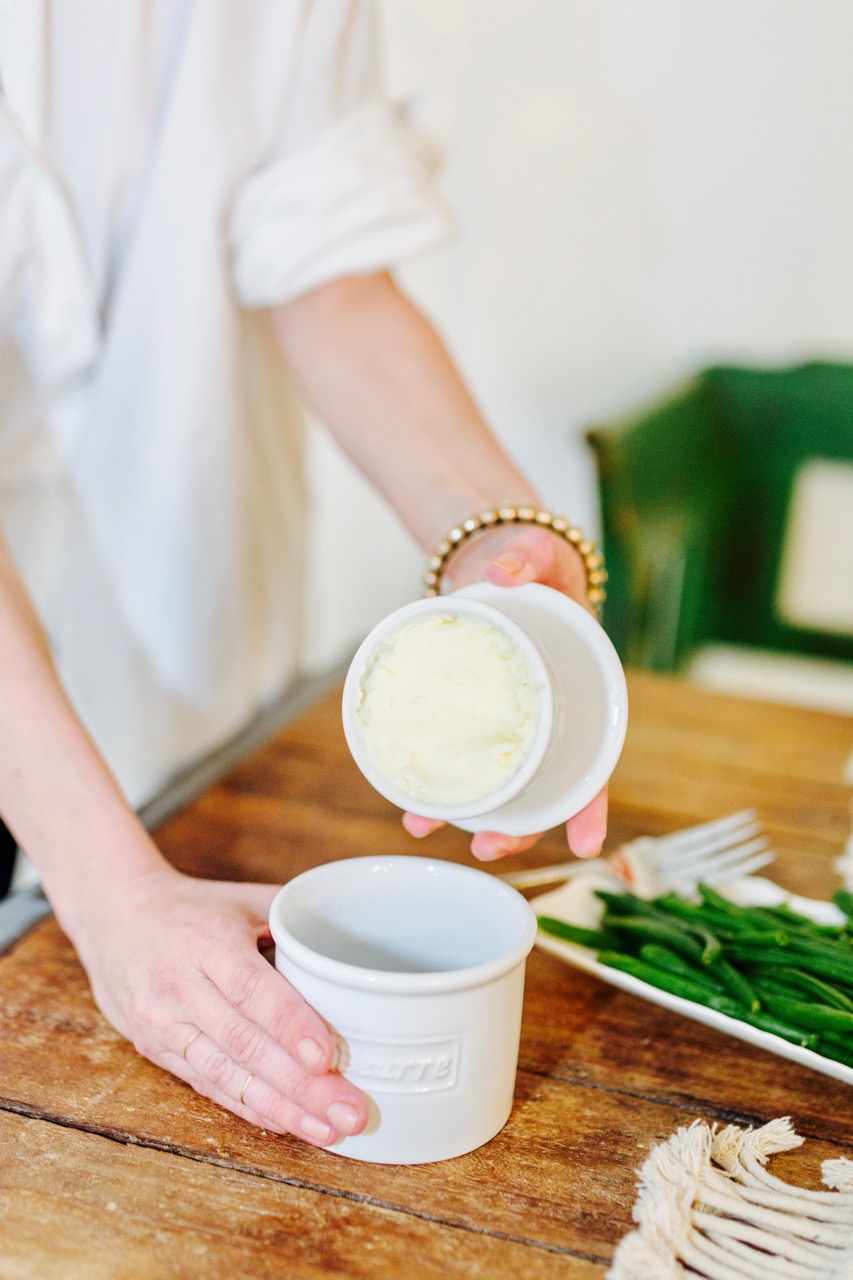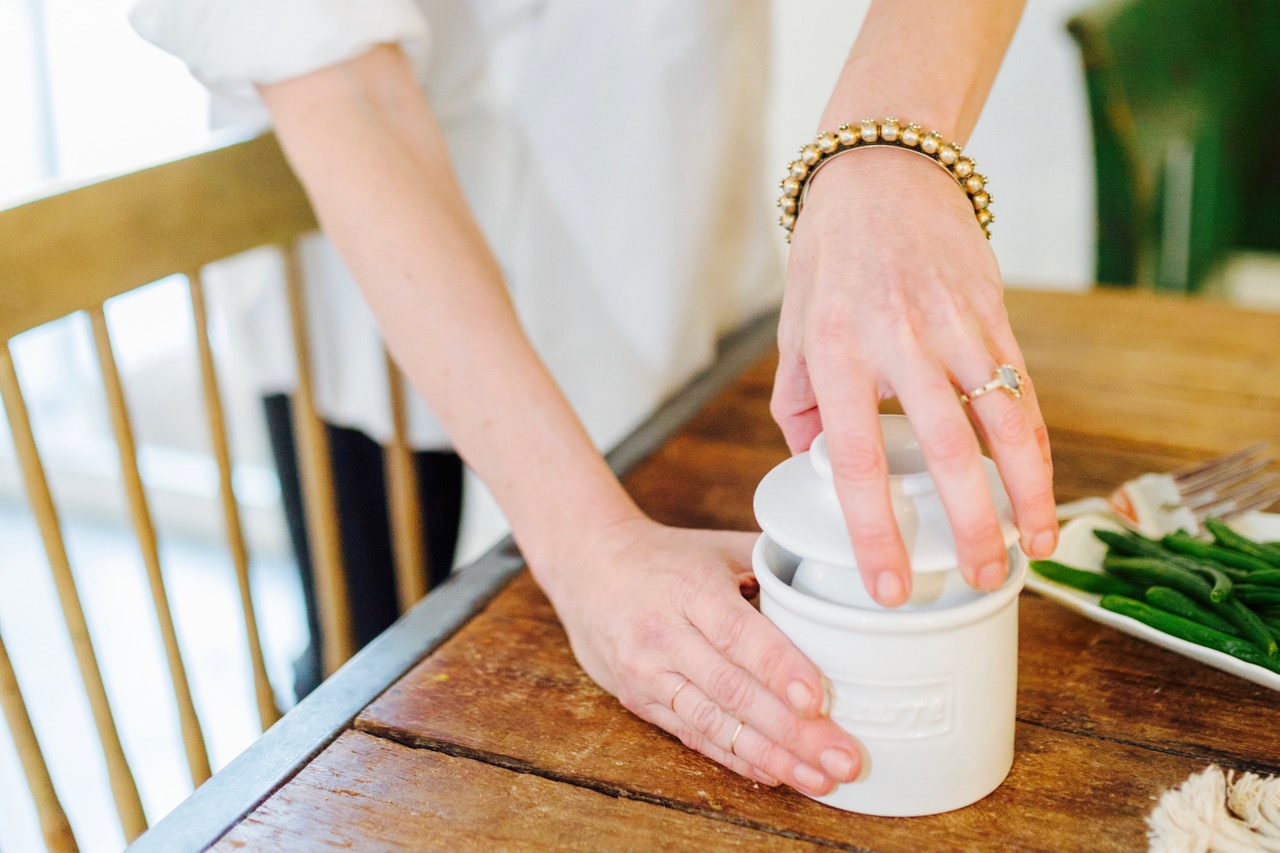
Today in completely random discoveries that I am now uncertain how I ever lived without: the butter crock.
Does a butter crock deserve its very own post?
It does.
See, Kendrick and I have always fought about butter (don’t worry, what we fight about much more often are vastly more normal things, like money and children). I hate having to use a pickaxe to butter my toast and want it sitting there on the counter in my adorable butter dish, but Kendrick says that butter is a dairy product and thus should not be permitted to live outside the refrigerator. While I have to concede the latter point to him, I have definitely seen people leave out butter dishes, so I keep trying to leave ours out, and he keeps not letting me.
This is apparently a problem that many people have: the desire to have soft butter, and also the desire to have their butter not go bad. And it has been solved.
By French people.
Here is how a butter crock (also known as a “butter bell”) works: you tightly pack butter into the little cup on the underside of the lid, then fill the base with about an inch of cold water. When the lid is on, the water creates a seal that prevents oxygen from getting to the butter, and presto: A constant, ongoing supply of perfectly softened butter.
Now, there are a couple of caveats: One is that squishing the butter into the cup requires the butter to pre-soften a bit, but let’s pick our battles and have them include mashing rock-hard butter into lovely innocent toast. The second is that you do have to remember to change the water every couple of days, so that it stays fresh and cool. And finally, you need to keep the crock in a cool spot, because if it warms up too much the butter will drop into the water, and nobody wants watery butter (or buttery water, for that matter).
On balance, though, I think it’s safe to say that you should own one of these.






